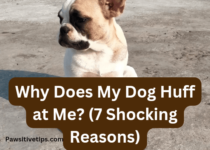Is Neosporin Safe for Dogs?
When it comes to our beloved dogs, their health and well-being are of the utmost importance. As responsible pet owners, we strive to provide them with the best care possible, especially when it comes to treating wounds and injuries. Neosporin, a popular over-the-counter topical antibiotic ointment, is a go-to product for humans, but what about dogs? In today’s article, we will look at the question, “Is Neosporin safe for dogs?” to shed light on whether this widely used product can be safely used to treat dog wounds. By understanding the potential risks and considering alternative options, we can ensure optimal care for our four-legged companions. So, let’s dive into the topic and discover the truth behind using Neosporin on dogs.
Is Neosporin Safe for Dogs?
Yes, Neosporin is generally safe for dogs when used as directed and under the guidance of a veterinarian. However, it is important to consult a veterinarian before using Neosporin or any other medication on your dog, as there may be specific cases or situations where it should not be used.
Related articles:
Is Bacitracin safe for dogs?
Yes! Bacitracin is generally safe for dogs when used as directed. It is an antibiotic ointment commonly used to treat minor skin infections, cuts, and wounds in dogs. However, it’s essential to consult with a veterinarian before applying any medication to your dog. They can provide specific guidance based on your dog’s health condition and the severity of the wound.
Is bacitracin safe for dogs if they lick it?
Bacitracin is generally safe for dogs if they lick it in small amounts. However, excessive licking may cause gastrointestinal upset or other adverse effects. It’s recommended to prevent your dog from licking the area where Bacitracin has been applied.
What to know before using Neosporin on your dog
Before reaching for that tube of Neosporin to treat your dog’s wound, there are several crucial factors to consider. While Neosporin is generally safe for dogs, it’s essential to have a clear understanding of the product, potential risks, and best practices to ensure the well-being of your canine companion. Let’s dive into the details and cover what you need to know before using Neosporin on your dog.
Consult your veterinarian
The first thing to consider before using Neosporin or any other medication on your dog is to always consult your veterinarian. Every dog is unique, and their specific health conditions or allergies may influence the appropriateness of using Neosporin. So when you consult your veterinarian, he or she will provide personalized advice based on your dog’s individual needs.
Active Ingredients
Neosporin contains three active ingredients: neomycin, polymyxin B, and bacitracin. These ingredients work together to combat bacteria commonly found in wounds. While these ingredients are generally safe for dogs, some dogs may have sensitivities or allergies to one or more of them. If your dog has had previous adverse reactions to similar antibiotics, it’s important to inform your veterinarian.
Potential Risks
Like we said earlier, Neosporin is generally safe, but there are potential risks associated with using it on dogs. Dogs are prone to licking their wounds, and the ingestion of Neosporin can cause gastrointestinal upset. Secondly, prolonged use of Neosporin on deep or puncture wounds may hinder proper healing by preventing the wound from draining or closing naturally. Also, excessive use or application to large areas of the body can lead to systemic absorption of the active ingredients, potentially causing adverse effects.
Guidelines for Proper Use
When using Neosporin on your dog, follow these guidelines to ensure safe and effective wound care:
- Clean the wound gently with a mild antiseptic or saline solution before applying Neosporin.
- Apply a thin layer of Neosporin directly to the wound using a clean cotton swab or gloved hand.
- Prevent your dog from licking the Neosporin by using an Elizabethan collar or covering the area with a bandage if advised by your veterinarian.
- Apply Neosporin two to three times a day, or as directed by your veterinarian.
- Monitor your dog’s reaction to Neosporin and the wound’s healing progress. If you notice any worsening symptoms or a lack of improvement, consult your veterinarian.
Alternatives to Neosporin
Remember, we’ve provided the best answer to the question, “Is Neosporin safe for dogs?”. But in case you want to try the alternatives to Neosporin, we will highlight some of the alternatives below.
These alternatives include products specifically formulated for dogs as well as natural and home remedies. Let’s explore these options.
Alternative products specifically formulated for dogs
- Veterinarian-Recommended Wound Care Products: Your veterinarian may suggest specific products designed for canine wound care. These products are formulated with ingredients that are safe for dogs and promote healing. They may come in the form of sprays, gels, or ointments. It’s important to follow your veterinarian’s recommendations regarding their application and frequency of use.
- Dog-Safe Antiseptic Solutions: Some antiseptic solutions, such as diluted povidone-iodine or chlorhexidine, are safe for use on dogs. These solutions can help clean wounds and prevent infections. However, always consult your veterinarian for proper dilution ratios and instructions on how to use these solutions effectively.
Natural and home remedies for dog wound care
- Saline Solution: A simple saline solution can be prepared by dissolving salt in warm water. It is gentle and effective for cleaning wounds. A saline solution helps flush out debris and promote a clean environment for healing.
- Aloe Vera Gel: Aloe vera gel, known for its soothing properties, can be applied topically to minor wounds or burns. It has natural antibacterial and anti-inflammatory properties that may aid in the healing process. Ensure you use pure aloe vera gel without any added ingredients that could be harmful to dogs.
- Calendula: Calendula, also known as marigold, has been used for centuries as a natural remedy for wound healing. It possesses anti-inflammatory and antimicrobial properties. Calendula ointments or creams can be applied to minor wounds in dogs, promoting healing and reducing inflammation.
Related articles:
What to do if your dog licks Neosporin
If your dog licks Neosporin, it’s essential to take appropriate action to ensure their safety and prevent any potential complications. Here’s a comprehensive guide on what to do if your dog licks Neosporin:
Assess the amount ingested
Determine how much Neosporin your dog has ingested. If it’s only a small amount or a minimal lick, the risk of adverse effects is likely low. However, if your dog has consumed a substantial quantity, it’s important to be vigilant and take appropriate measures.
Read the Neosporin label
Check the packaging of the Neosporin product to identify any specific warnings or instructions regarding ingestion. Some Neosporin products may contain additional ingredients that could be harmful if ingested in large quantities. If there are any specific warnings, contact your veterinarian immediately for guidance.
Observe for Symptoms
Keep a close eye on your dog for any signs of gastrointestinal upset or adverse reactions. Common symptoms may include vomiting, diarrhea, excessive drooling, loss of appetite, abdominal discomfort, or behavioral changes. If you notice any concerning symptoms, contact your veterinarian promptly.
Call your veterinarian
It’s always best to consult your veterinarian when your dog ingests any medication or substance meant for human use. Provide them with specific details such as the type of Neosporin, the amount ingested, and your dog’s weight. They will be able to assess the situation and provide appropriate advice based on your dog’s individual circumstances.
If your dog exhibits severe symptoms or you are unsure of the appropriate course of action, seek immediate veterinary assistance. Ingestion of Neosporin can have different effects on different dogs, so it’s important to have a professional assess the situation.
Follow your veterinarian’s instructions
Your veterinarian may recommend various courses of action, depending on the amount of Neosporin ingested and your dog’s overall health. They may advise monitoring your dog at home, inducing vomiting if the ingestion was recent and the quantity is significant, or bringing your dog in for an examination. Follow their instructions carefully to ensure the well-being of your dog.
Prevent access to Neosporin
After an incident involving licking Neosporin, it’s crucial to prevent further access to the product. Store Neosporin and other medications securely in a place that is inaccessible to your dog. Consider using childproof containers or keeping them in cabinets or drawers.
Final thoughts
That’s it on the question, “Is Neosporin safe for dogs?” Remember, your veterinarian is your best ally in making informed decisions about your dog’s wound care. They can provide personalized advice, recommend alternative products specifically formulated for dogs, or suggest natural remedies that may be suitable for your furry friend. By working closely with your veterinarian, you can ensure that your dog receives the appropriate care and attention it needs.



